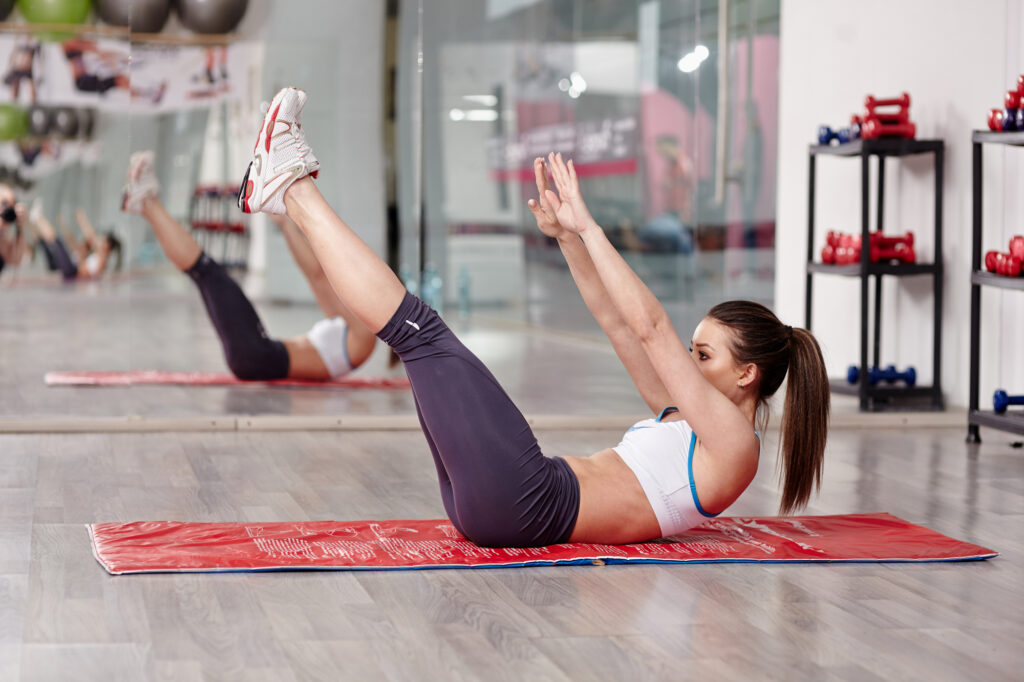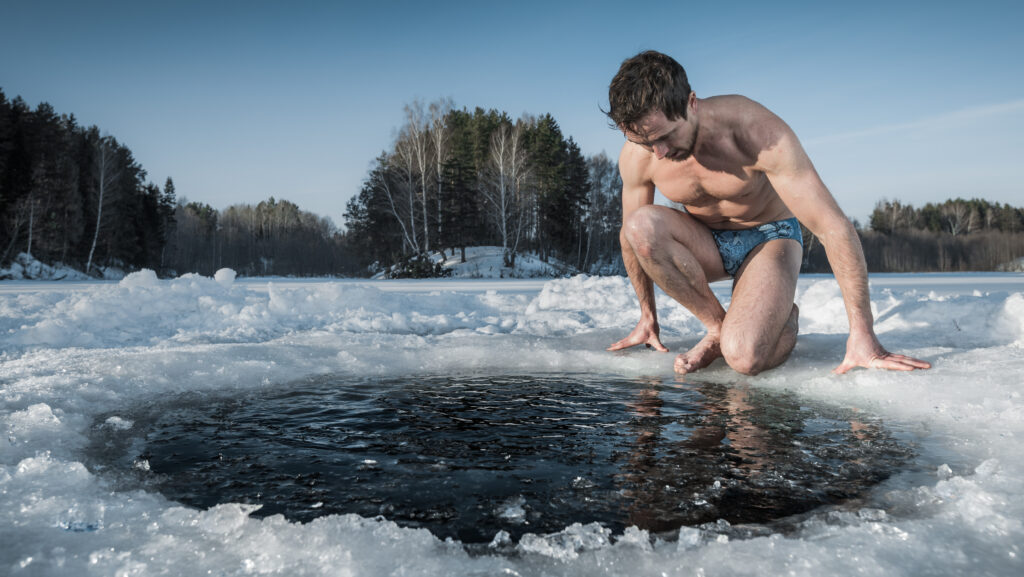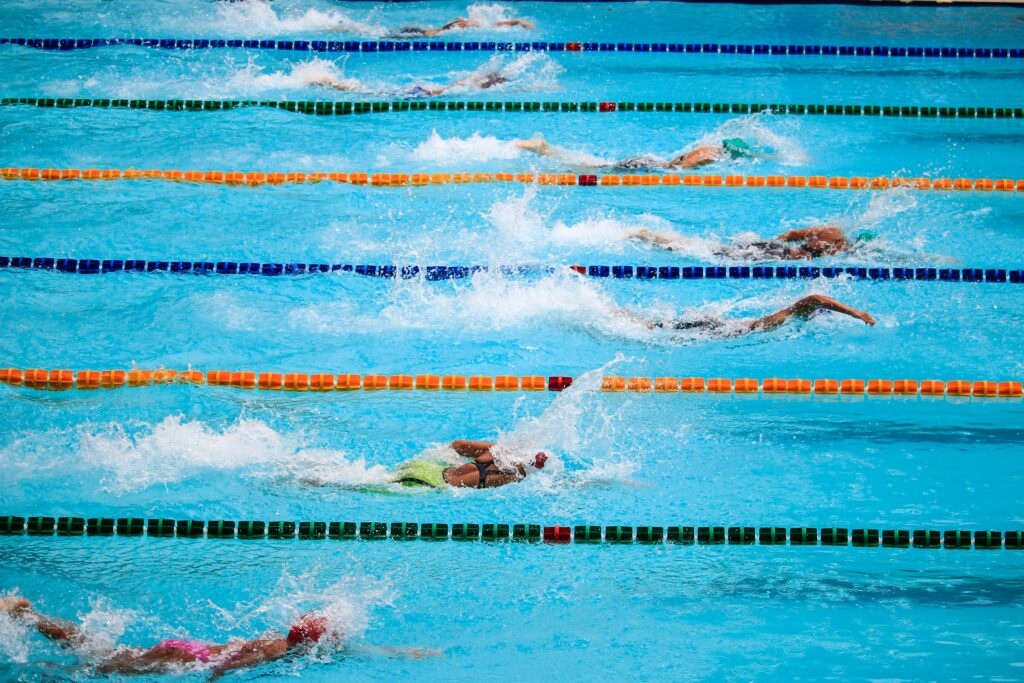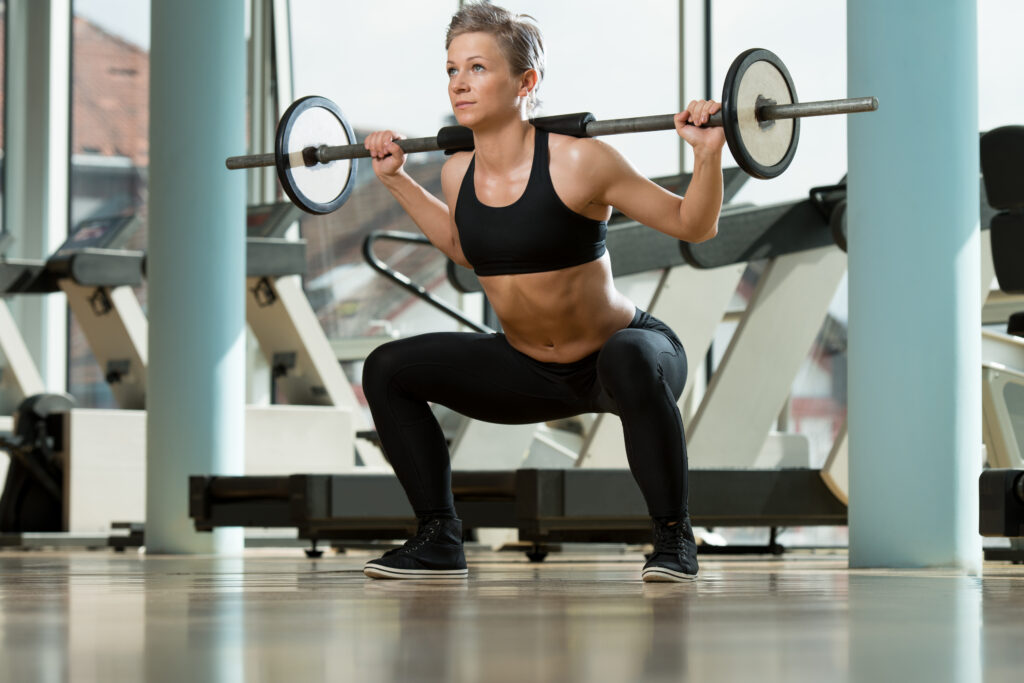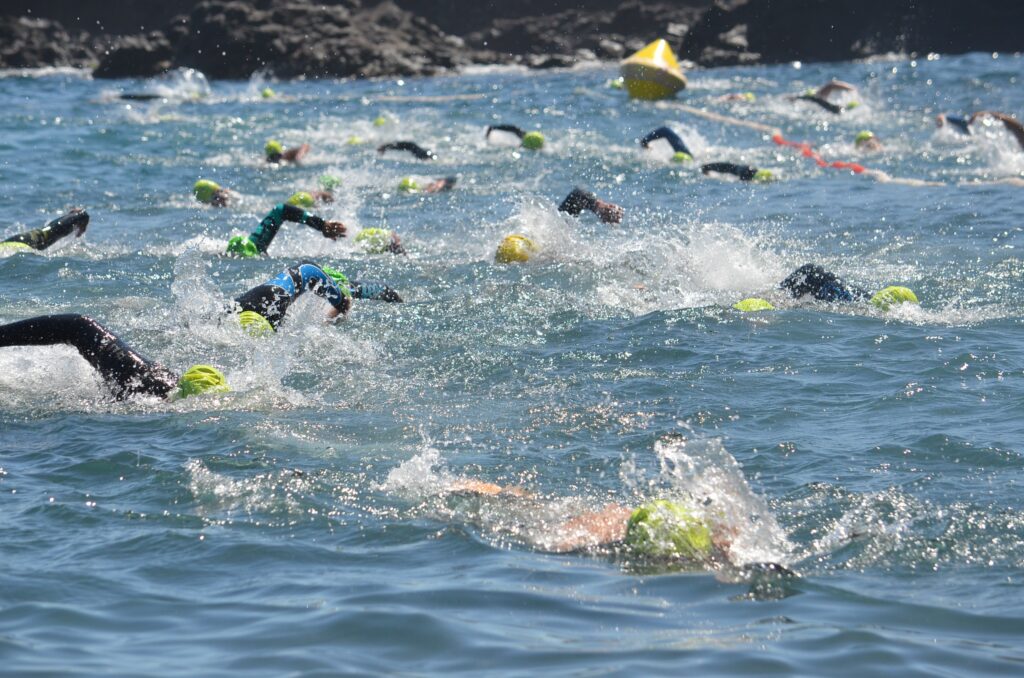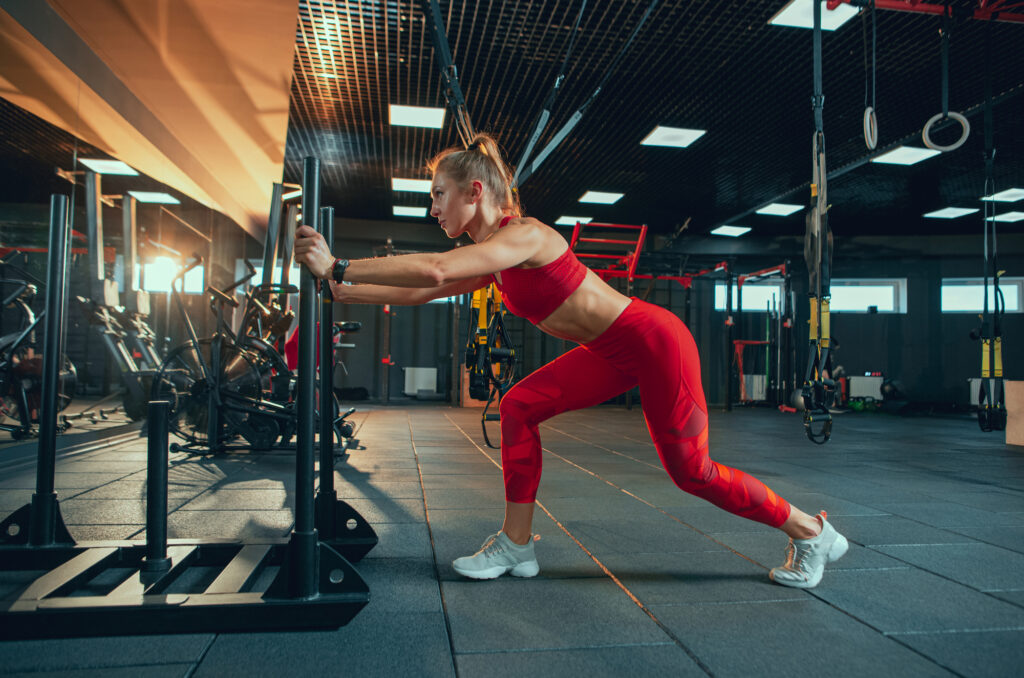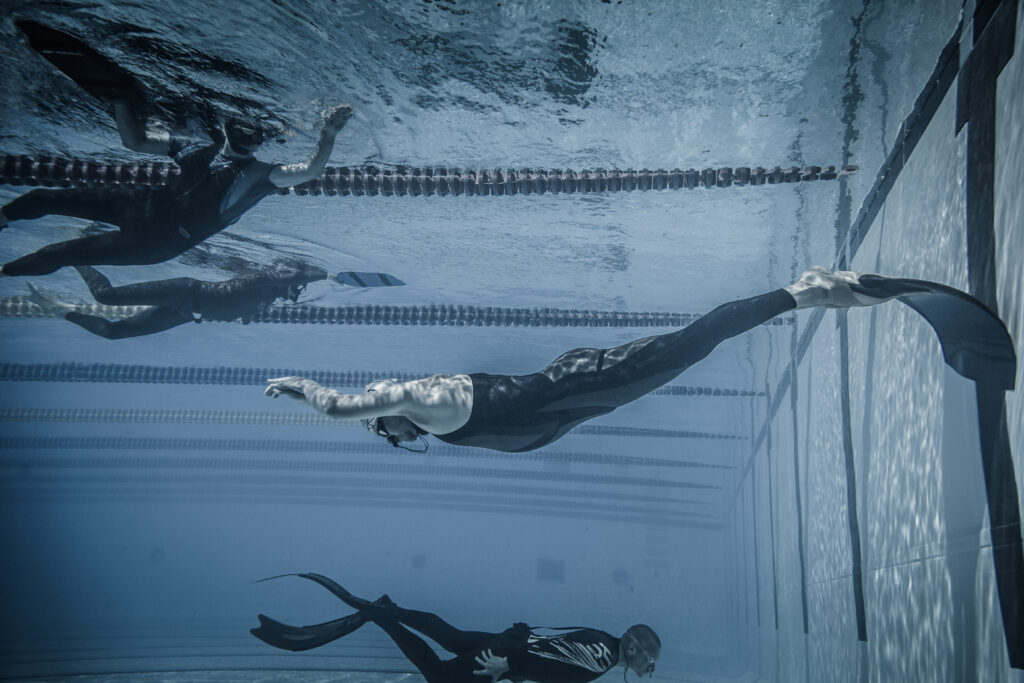Swimmers often seek various training methods to enhance their performance in the water. A full-body workout tailored for swimmers can significantly improve the key muscle groups used during swimming. Incorporating strength training exercises into a swimmer’s routine is crucial as it contributes to better stroke efficiency, increased power, and reduced risk of injury. Moreover, with the rising interest in home workouts, swimmers are looking for effective training options that do not require equipment.
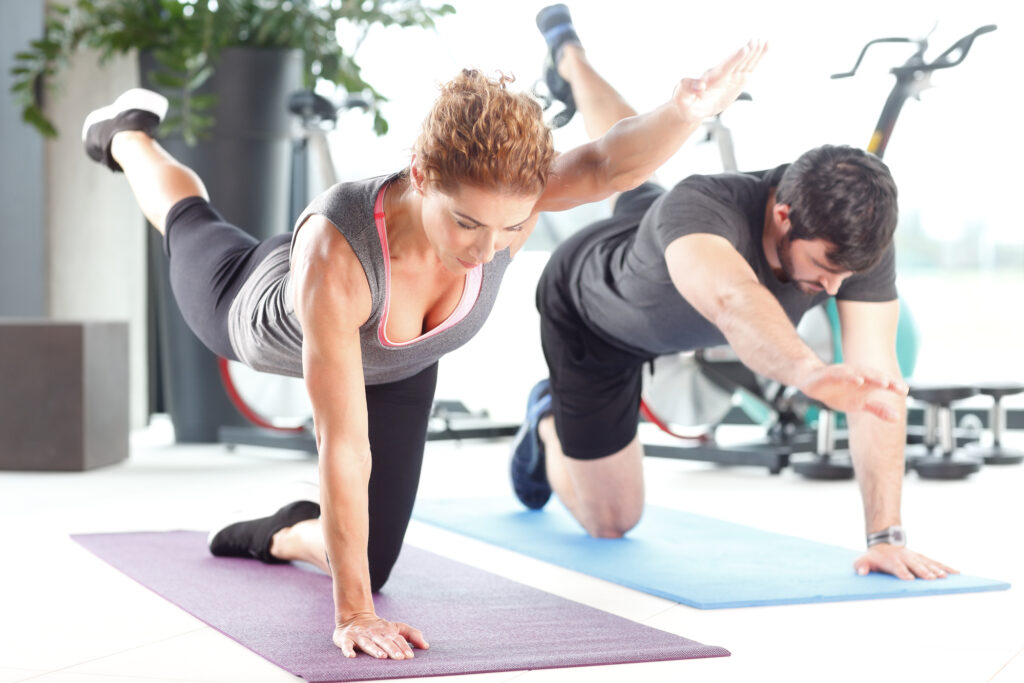
One of the primary considerations for swimmers is to focus on exercises that mimic the movements of swimming and activate the core, which is essential for maintaining proper body alignment and balance in the water. Exercises such as planks and squat jumps aid in developing core strength, while pull-ups and push-ups can enhance upper body strength, vital for the pulling motion in various strokes.
By employing a range of bodyweight exercises, swimmers can engage multiple muscle groups, including the back, shoulders, arms, and legs, which are all integral for swimming. The advantage of a no-equipment workout is the convenience and flexibility it offers, allowing individuals to train anytime and anywhere, which is particularly beneficial for swimmers who cannot access a pool daily.
Understanding Swimming Muscles
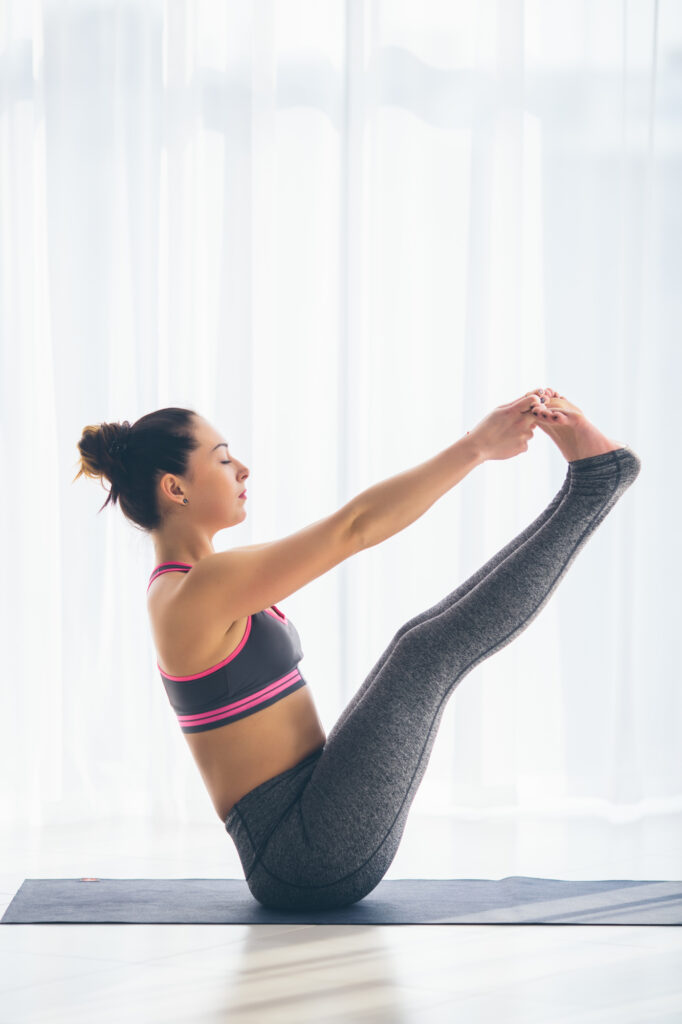
Swimming recruits multiple muscle groups, and conditioning them is crucial for performance. This section will elucidate the muscle groups involved in swimming and why full-body workouts bolster a swimmer’s ability.
Muscle Groups Used in Swimming
Swimming is a comprehensive workout involving a range of muscle groups, each essential for different aspects of the sport. The primary muscles engaged include:
- Core Muscles: These provide stability and aid in efficient movement through the water, curbing drag.
- Upper Body Muscles: The deltoids, triceps, and biceps are pivotal for stroke propulsion and manoeuvring in the water.
- Back Muscles: Latissimus dorsi, trapezius, and the rhomboids power the pulling motion during strokes.
- Leg Muscles: Quadriceps, hamstrings, and calves facilitate kicking, which provides forward momentum and assists in maintaining balance.
For a swimmer’s body to execute these movements effectively, these muscles must work in concert, highlighting the necessity of a holistic approach to training.
Importance of Full-Body Workouts for Swimmers
Full-body workouts are imperative for swimmers to enhance their in-water performance. These workouts foster:
- Strength and Power: Increased muscular endurance and strength translate to more forceful strokes and kicks.
- Balance and Stability: A well-conditioned core ensures better body alignment and reduces the risk of injuries.
- Flexibility: Full-body conditioning promotes a greater range of motion, leading to more fluid and efficient movements.
In essence, swimmers benefit from a fitness regime that addresses all key muscle groups, supporting enhanced swimming techniques and aiding injury prevention. For those seeking to optimise their swimming muscles without equipment, it’s pivotal to incorporate exercises that target these areas comprehensively.
Warm-Up Exercises
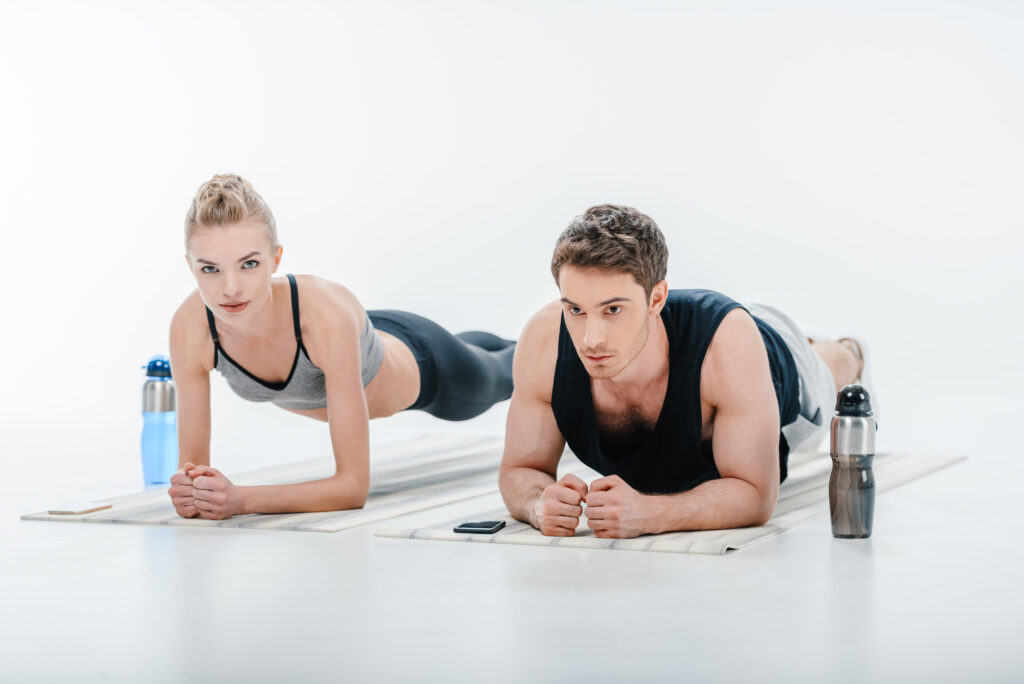
Adequate warm-up exercises are vital in priming the body for a full-body workout aimed at enhancing swimming muscles. They promote blood flow, increase heart rate, and prepare the muscles and joints for the rigours of exercise, reducing the risk of injury.
Dynamic Stretching
Dynamic stretches involve active movements where muscles go through their full range of motion. Swimmers may start with arm circles, progressively increasing the diameter of the circles to thoroughly engage the shoulder joints. Additionally, doing leg swings helps in loosening the hamstrings and hip flexors, pivotal for powerful leg movements in swimming.
Joint Mobility Drills
Joint mobility drills target the synovial joints, which are crucial for efficient and fluid swim strokes. An example includes hip rotations — standing on one leg, swimmers can circle their free leg in a controlled motion to enhance hip flexibility. Another effective drill is ankle circles; as swimmers rely heavily on ankle flexibility for propulsion, rotating the ankles in both directions is essential for mobilising these joints.
Core Strengthening
Strengthening the core is vital for swimmers as it provides stability, improves posture, and aids in the efficient transfer of energy during swimming strokes. A robust core contributes to better balance and swimming technique.
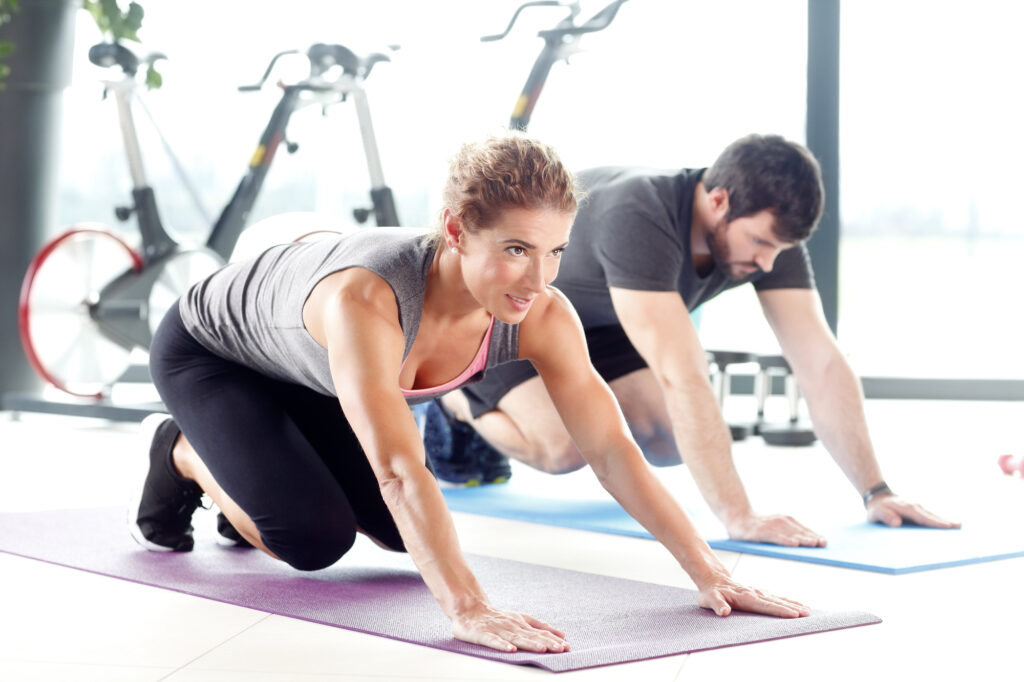
Plank Variations
The plank is an exceptional exercise for core strengthening. Swimmers can benefit from performing forearm planks, holding their body in a straight line from shoulders to ankles while bracing the abdomen. Adding variations, such as side planks with transverse reaches, can target the obliques and provide an increased challenge.
Leg Lifts
Leg lifts focus on the lower abdominal muscles, which are crucial for a swimmer’s kick and overall stability. They can perform lying leg lifts by keeping their back flat against the ground and slowly raising straight legs up to the ceiling, then lowering them without touching the floor.
Russian Twists
Russian twists are effective for targeting the rotational muscles important for swimming strokes. Swimmers should sit on the floor with knees bent, lean back slightly to a 45-degree angle, and twist the torso from side to side, optionally holding a weight to increase intensity.
Upper Body Exercises
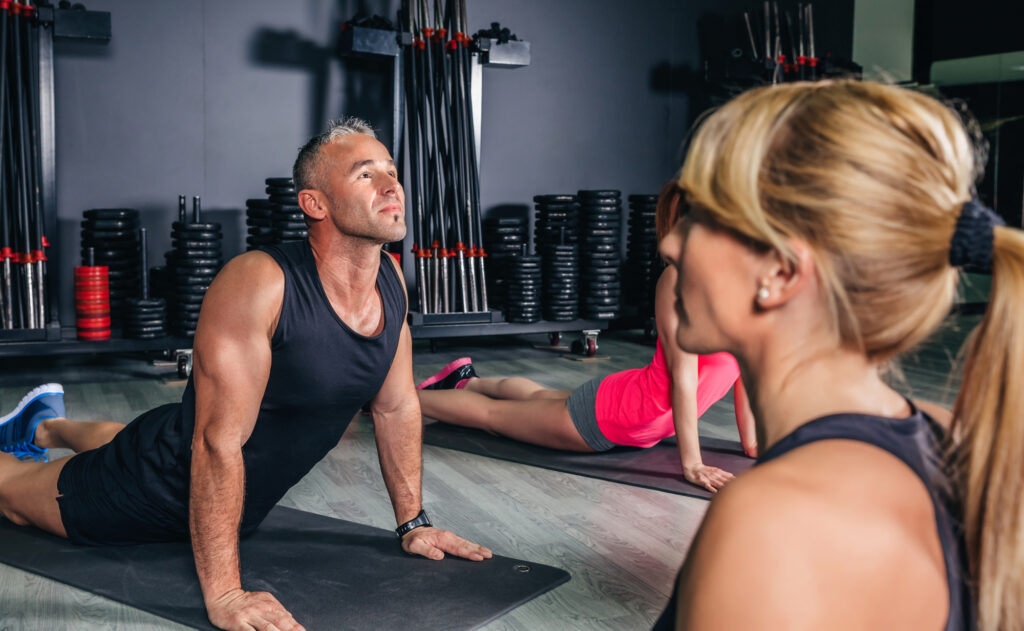
Upper body strength plays a vital role in swimming performance as it enhances propulsion and reduces the risk of injury. The following bodyweight exercises have been selected to target key muscle groups used during swimming.
Push-Ups
Push-ups are fundamental for developing strength in the chest, shoulders, and triceps. Swimmers will benefit from the standard push-up to build endurance in these muscles. For variation, they can alter hand positioning to target different parts of these muscle groups.
- Standard: Keep the body straight and lower it to the ground before pushing back up.
- Wide-arm: Place hands wider than shoulder-width to focus on the chest.
- Diamond: Form a diamond shape with hands under the chest to target triceps.
Tricep Dips
Tricep dips are effective for isolating and strengthening the triceps, an important muscle group for the arm’s push phase in swimming. To perform tricep dips:
- Sit on the edge of a stable surface.
- Place hands beside the hips, fingers pointing forward.
- Slide off the surface, bending the elbows to lower the body.
- Push back up to the starting position.
Note: Keep the elbows tight to the body throughout the movement.
Pike Press
Pike presses focus on the shoulders and upper back, muscles essential for swim starts and turns. For a proper pike press:
- Start in a pike position with hips high and hands shoulder-width apart.
- Bend at the elbows and lower the forehead towards the ground.
- Push back up to fully extend the arms.
Variations:
- Elevated feet: Place feet on a raised surface to increase resistance.
- One-leg raised: Lift one leg to engage the core and add difficulty.
Lower Body Exercises
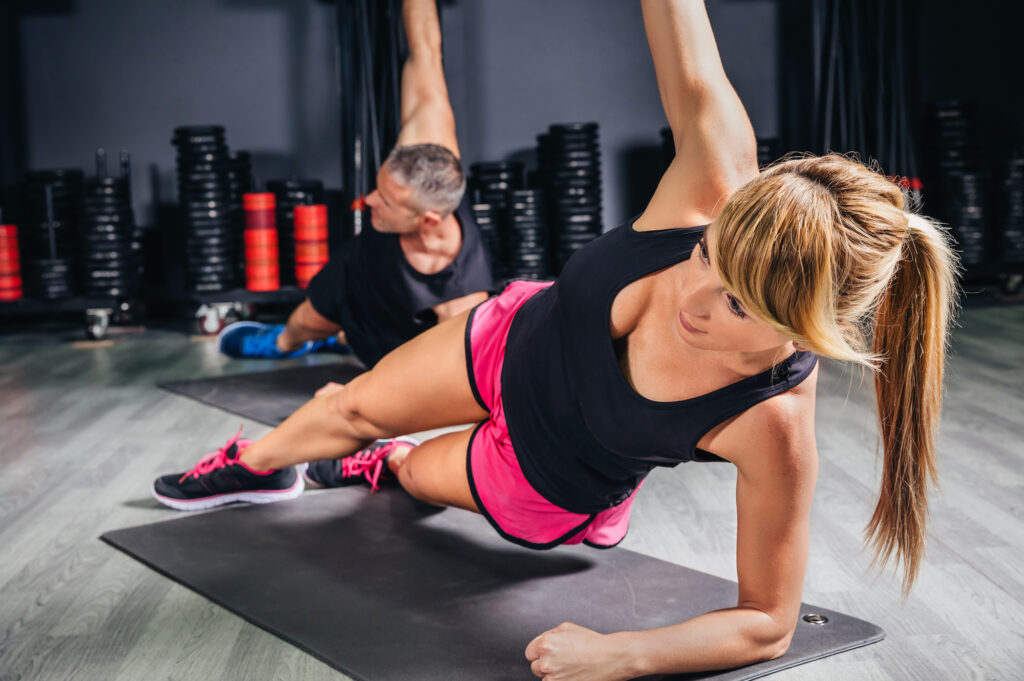
Strengthening the lower body is crucial for swimmers, as it enhances propulsion in the water. These exercises target key muscle groups that contribute to a swimmer’s kick and overall swimming performance.
Squats
Squats focus on developing the quadriceps, hamstrings, glutes, and calves, which are essential for powerful swimming kicks. The swimmer begins by standing with feet shoulder-width apart, lowering their body as if sitting back into a chair and then rising back to the starting position. Proper form is paramount to ensure effectiveness and prevent injury.
Lunges
Lunges are integral for improving balance and coordination, while also strengthening the same lower body muscles emphasised in squats. A swimmer steps forward with one leg, bending both knees to lower the hips until the back knee is just above the floor, and then pushes back to the start position. They should alternate legs to ensure balanced muscle development.
Glute Bridges
Glute bridges enhance core stability and target the gluteal muscles, which are vital for a swimmer’s starts and turns. The swimmer lies on their back with knees bent and lifts their hips towards the ceiling, creating a straight line from shoulders to knees, then lowers the hips back down. This exercise can be intensified by elevating the feet or adding a single-leg variation.
Swimming-Specific Drills
Swimming-specific drills are designed to enhance a swimmer’s technique, strength, and efficiency in the water. These drills target muscle groups and motions utilised in swimming, offering an effective workout without the need for equipment.
Dry Land Swim Strokes
Dry land swim strokes imitate the swimming movements on land, which can condition the muscles and improve coordination. Perform these drills with focus on form to translate the benefits into the water. Freestyle Arm Pull: Lie face down on a mat with arms extended forward. Mimic the freestyle arm motion by pulling one arm down towards the hip while keeping the hand in line with the arm, then return to the starting position and repeat with the other arm.
Body Positioning Drills
Body positioning drills aim to teach the body how to maintain proper alignment and balance in the water. Streamline Push-Up: Begin in a standard push-up position but with hands positioned close together to form a point. Lower the body to the floor while keeping the back straight and then push back up to the starting position, maintaining a straight line from head to heels. This drill promotes a tight, streamlined position akin to that used in swimming.
Cool-Down Routine
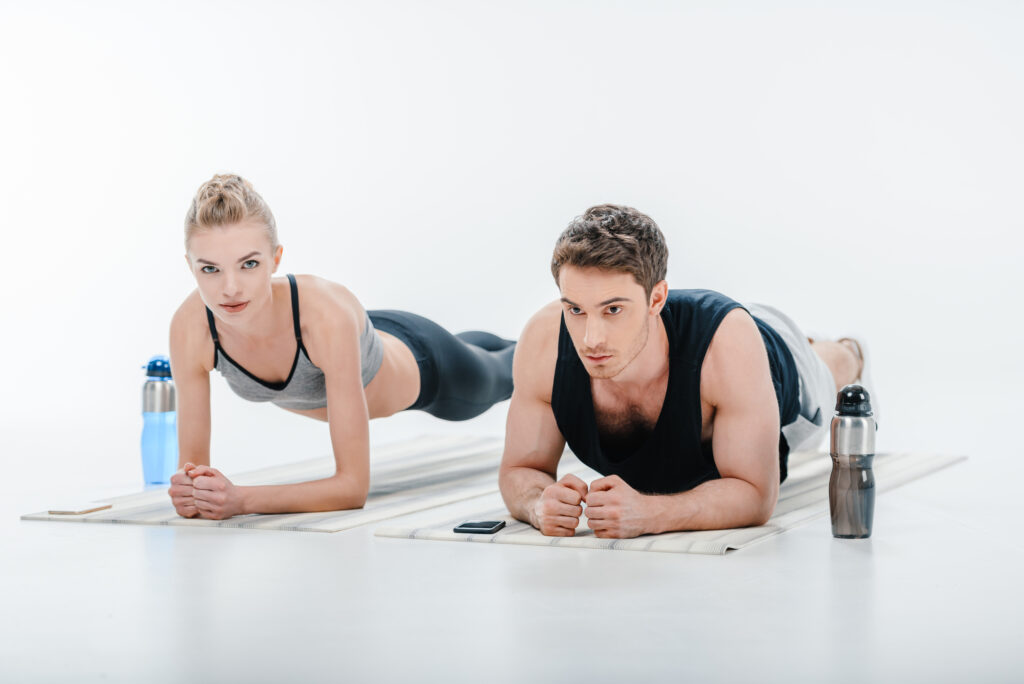
A proper cool-down routine helps regulate blood flow, prevents muscle stiffness, and enhances overall recovery. This section focuses on effective cool-down techniques that can be done without any equipment, specifically static stretching, and deep breathing exercises, which aid in muscle relaxation and nervous system recovery.
Static Stretching
Static stretching involves holding a stretch for an extended period, usually between 15–30 seconds. It is crucial for improving flexibility and easing muscles back into a state of rest after a workout. Swimmers should focus on stretches that target the muscles most used during swimming.
- Shoulder Stretch: Bring one arm across the body, holding it with the opposite hand, and press gently toward the chest.
- Chest Stretch: Interlock fingers behind the back, straighten the arms and lift gently, feeling the stretch across the chest.
- Quadriceps Stretch: While standing, grasp the foot of one leg and pull it towards the buttocks, keeping knees together.
These stretches should be done slowly and with control, avoiding bouncing to prevent injury.
Deep Breathing Exercises
Deep breathing exercises assist in calming the nervous system, reducing stress, and help swimmers to regain control over their breathing after intense physical activity. Proper technique is paramount to maximising the benefits of breathing exercises.
- Box Breathing: Inhale for a count of four, hold the breath for a count of four, exhale for a count of four, and then wait for another four counts before the next breath. This method helps to focus the mind and bring respiration back to a normal rate.
Practising these cooldown strategies can be particularly beneficial for swimmers’ recovery and future performance in the pool.
Frequently Asked Questions
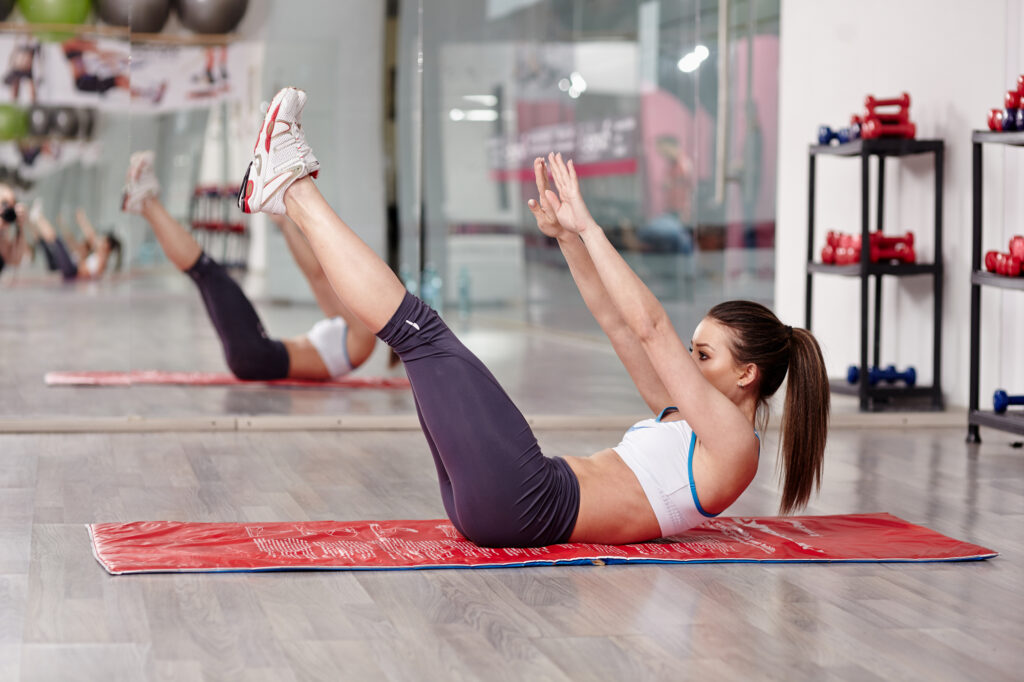
To effectively improve swimming performance, certain bodyweight exercises can target and enhance muscle groups critical for swimming. These exercises provide a practical way to maintain swimming fitness without the need for specialised equipment.
What are effective whole-body exercises to enhance swimming performance without using equipment?
Bodyweight squats and burpees are effective full-body exercises. They build leg strength and endurance, which are vital for a powerful kick and overall swimming propulsion.
Which dryland exercises can be performed at home to strengthen key swimming muscles?
Push-ups and planks focus on the upper body and core, strengthening the shoulders, chest, and abdominal muscles that are essential for maintaining proper swimming form.
How can I simulate swimming motions on land to improve my in-water strength?
Exercises like the Superman pose and arm swings can mimic the movements done in the water, targeting the back muscles and increasing the range of motion necessary for strokes.
What sequence of bodyweight exercises targets muscles used in swimming?
A sequence that includes lunges, tricep dips, and flutter kicks will work the lower body, upper body, and core, respectively, providing a comprehensive workout for the muscles used in swimming.
How often should I incorporate no-equipment workouts to see improvements in my swimming technique?
Incorporating no-equipment exercises into a routine two to three times per week can help swimmers see improvements in their muscle strength and swimming technique.
Can you recommend a routine for swimmers to maintain fitness at home without any kit?
Swimmers can maintain fitness at home by performing cycles of jumping jacks, alternating leg reaches, and side planks, aiming for three sets with minimal rest to also maintain cardiovascular endurance.

